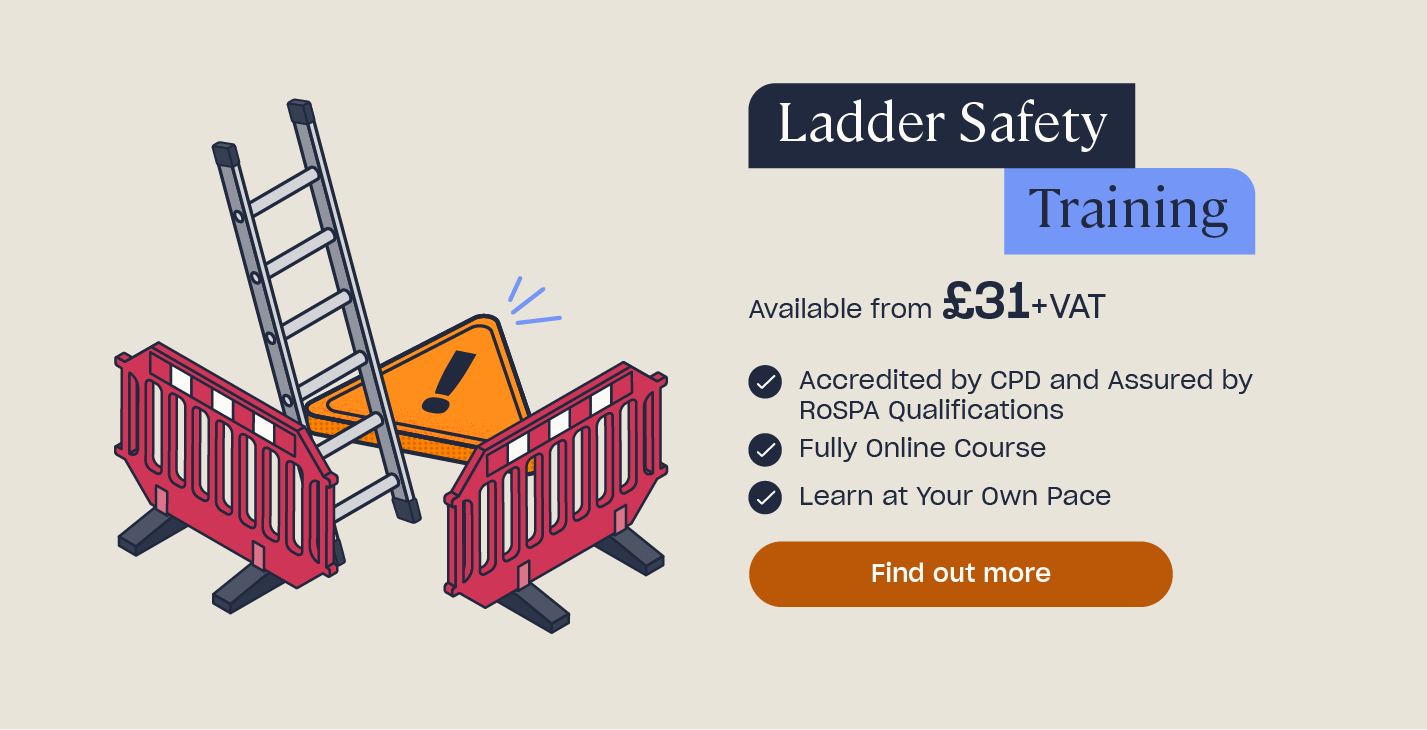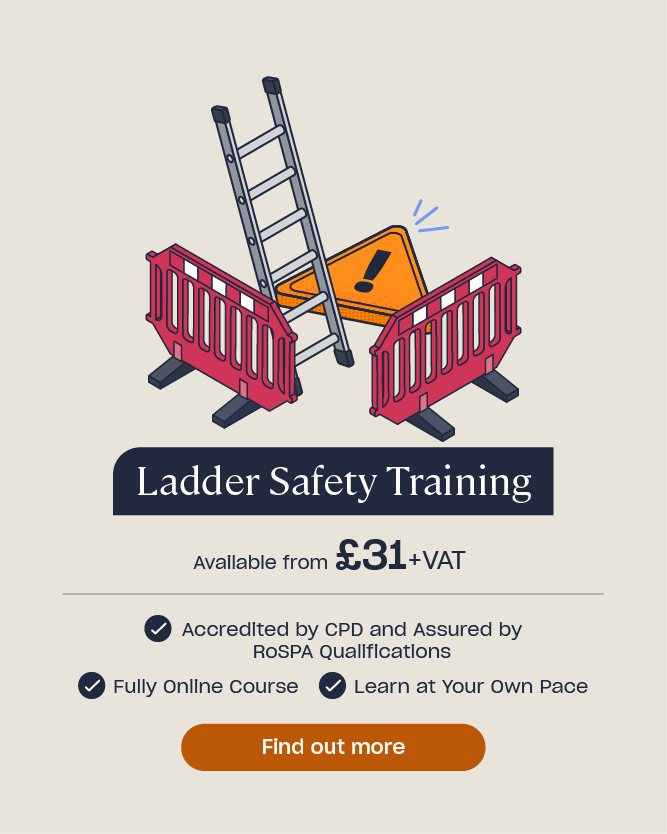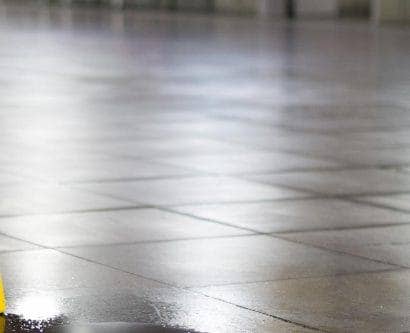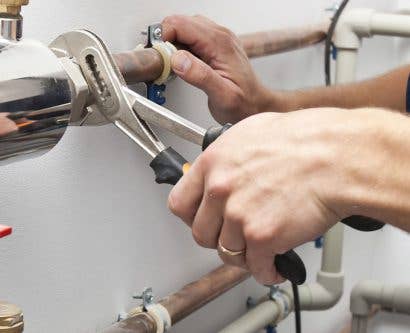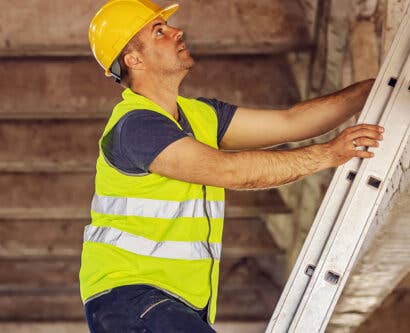Safely Securing Ladders: Guidance & Procedure
Ladders are often a suitable piece of equipment for completing tasks that involve working at height. This must be determined by a risk assessment. However, to ensure the safe use of ladders, you must be able to confidently secure it. A ladder that is not secured or is secured incorrectly is a serious risk to the user, as well as to those in the surrounding vicinity. This guide will explain how to secure a ladder to reduce the likelihood of accidents occurring.
Why is it Important to Safely Secure a Ladder?
Ladders can pose serious health and safety risks, particularly if they are able to slip away from the wall or surface that they are resting on. It may be the case that some of these accidents may have been avoided if the equipment was safely secured. Therefore, it’s very important to secure the ladder appropriately to prevent the ladder from falling, or from the user falling from it.
If your work tasks involve the use of a ladder, both your employer and yourself hold responsibilities. Under the Health and Safety at Work, etc. Act 1974 (the HSW Act) and the Management of Health and Safety at Work Regulations 1999 (MHSWR), employers are legally required to manage and supervise health and safety at work. They must do so by assessing the risk to employees and anyone else who may be affected by the work. Following this, they must provide employees with training that ensures they can competently carry out their work activities.
As an employee, it is your duty to follow procedures when completing tasks such as those that require a ladder. In doing so, you will help to protect yourself and those around you from harm.
If you want to test your existing knowledge on ladder safety, you can take our quiz, here.
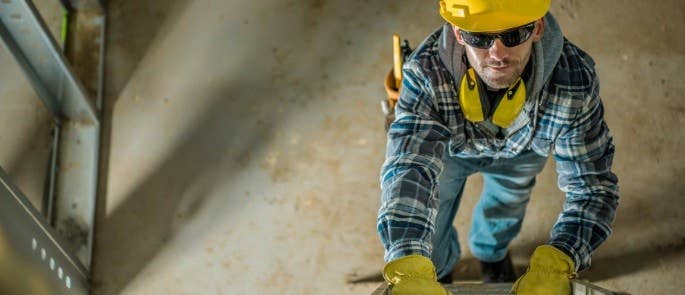
How to Secure a Ladder
There are multiple methods you can use to secure and stabilise a ladder. Which one you choose will depend on the type of ladder and the conditions of the specific task. It is important that you consider which option will reduce or control the risks that have been identified. While there are many ways of securing ladders, we are going to focus on some of the most commonly used methods and devices. This includes tying the stiles, using a ladder stability device and footing the ladder.
Remember that before you secure your ladder safely in place, you must firstly carry out pre-use inspections of the ladder. You must also ensure that the environment conditions, such as weather and surface materials, are appropriate.
Tie the Stiles
You should have already checked the condition of the ladder stiles during a pre-use inspection. Never use a ladder if the stiles are bent or damaged. This could either cause it to collapse or you may lose your footing more easily.
Often, tying the stiles of the ladder is the best option to ensure it is safely secured. However, this will need to be determined by a risk assessment for the particular task. You must tie both ladder stiles with straps or rope to a suitable point, such as handrails or solid window frames. Make sure that you actually tie the stiles and not the rungs (feet) of the ladder. If you are using a ladder to reach another level, it must extend at least one metre above the surface that you are going to access. This means you should tie the ladder stiles a minimum of one metre from the top of the ladder.
Use a Ladder Stabilisation Device
You cannot always safely tie the stiles of a ladder. Alternatively, you may be able to use a ladder stabilisation device. There are many devices commercially available, including those which provide base support and stand-offs (or stand-off brackets).
Base support can be attached to the bottom of the ladder. It works by providing further support to hold and distribute the weight on the ladder. Examples you may wish to use include support (or stabiliser) legs or anti-slip boards that lock the ladder feet into place.
Stand-off devices ensure that a strong resting point at the top of the ladder can be maintained. A stand-off device should be used if the ladder would otherwise be resting against weak surfaces such as plastic gutters or glazing. The device works by holding and supporting the ladder so that it doesn’t directly rest against the weak surface.
Foot the Ladder
You should only foot the ladder if other methods of safely securing it cannot be achieved. Footing the ladder means that another person physically holds the base of the ladder in place. While the user ascends and descends it, the person footing it should maintain a secure grip of the stiles. Footing should not be used to secure a ladder that is particularly long. In addition, the Health and Safety Executive (HSE) advise to avoid footing ladders where ‘reasonably practicable’. In such circumstances other access equipment, such as mobile towers, should be used instead.

Securing ladders correctly is key to ensuring that they can be used safely. The method or device you use will depend on the particular task you need to complete. Remember that in some instances using a different type of working at height equipment may be a safer alternative. It is not guaranteed that you won’t experience any accidents by simply securing the ladder. You must follow the safety procedures and training that your employer will have provided you with before you use a ladder, and be confident that you can do so safely.
Further Resources:
- Ladder Safety Training
- Ladder Inspection Checklist
- Ladder Safety Quiz
- Guidance on the Ladder Angle Rule
- A Ladder Inspection Checklist: Free Template


